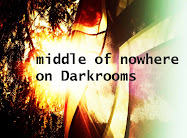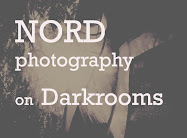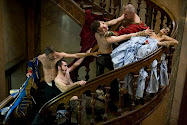Hail, O’ Hail, Liberty!
photo © Predrag Pajdic, 2011
Photography and styling : Predrag Pajdic, 2011
Models : Dimitris Alexandrou and Sotiris Georgiou
Assistant : Nikos Makryonitis
Using historical pieces of traditional Greek costumes as well as pieces from the latest Sotiris Georgiou collection
Location : Athens, 7 September 2011
Models : Dimitris Alexandrou and Sotiris Georgiou
Assistant : Nikos Makryonitis
Using historical pieces of traditional Greek costumes as well as pieces from the latest Sotiris Georgiou collection
Location : Athens, 7 September 2011
Text : J. L. Nash, 2011
photo © Predrag Pajdic, 2011
''This
Greece story is moving and in a contemporary light, actually
transcends that which is Hellenistic. Let these be the new gods and
heroes for it all belongs to the raw and the sublime.''
Ancient Greek society was one where men made things happen, women were idealized and its regions were rich due to the multitude of cultures; Sparta, Macedonia, Athens to name but a few. Today we still tell our children about their myths and legends where updated versions of Herodotus’ records are readily available in our DVD stores and few of us function without Pythagoras or Euclid’s help in our everyday lives. Now modern Greece
is in a very public turmoil. Unemployment is rife, accusations of
corruption are an everyday occurrence and the gap between the rich and
poor strikes deep into the heart of the everyday citizens who can barely
afford to feed their families. The sight of men and women going through
dumpsters, searching for food and begging at traffic lights are sadly
not uncommon. But what of art and the beauty that comes from Greece? Has
this glorious culture been lost?
To see Greece now, in its very obvious trouble brings to mind a society the ancients might well have inhabited. For this is a place where our European counterparts’ moral judgement is akin to the chorus of elders in a tragedy or even a drawn out black comedy, standing in the corner, they narrate what the outside is thinking; looking in on a very specific set of activities which describe the depths of human emotion and experience. It is not surprising either, that such representations of life and ineffable beauty are in fact so gentle that the chorus moves to woo. This is a place where the new faces of Sparta and Athens sit opposite each other; the fabric of old is draped over younger bodies wearing traditional textures and man’s naked beauty is displayed. Herein, the stuff of new myths and legends begins.
To see Greece now, in its very obvious trouble brings to mind a society the ancients might well have inhabited. For this is a place where our European counterparts’ moral judgement is akin to the chorus of elders in a tragedy or even a drawn out black comedy, standing in the corner, they narrate what the outside is thinking; looking in on a very specific set of activities which describe the depths of human emotion and experience. It is not surprising either, that such representations of life and ineffable beauty are in fact so gentle that the chorus moves to woo. This is a place where the new faces of Sparta and Athens sit opposite each other; the fabric of old is draped over younger bodies wearing traditional textures and man’s naked beauty is displayed. Herein, the stuff of new myths and legends begins.
photo © Predrag Pajdic, 2011
photo © Predrag Pajdic, 2011
Whether caught in the smoothness of flesh of marble upon the face of Aphrodite or Apollo or in the breeze of skirted thigh off duty, in movement, there is an undeniable masculinity to Greece.
It holds the bravado of the Spartans and diplomacy of Athenians. It
maps the strategies of Macedonia and all its descendents and the cheek
of imperial power, even as far as northern Africa. These images of
today’s Greece, its church, the orthodoxy of society structure and the
language that has maintained shape and form holds up new ideas in the
same way records are established and broken by Olympians; today’s Olympians and it feels strong.
There is a breath and a whisper in each image that captures that sense of the past in all its softness as well as today’s strength, today’s hope and today’s energy. This Greece story is moving and in a contemporary light, it actually transcends that which is Hellenistic.
There is a breath and a whisper in each image that captures that sense of the past in all its softness as well as today’s strength, today’s hope and today’s energy. This Greece story is moving and in a contemporary light, it actually transcends that which is Hellenistic.
photo © Predrag Pajdic, 2011
photo © Predrag Pajdic, 2011
photo © Predrag Pajdic, 2011
There is undeniable power and a
different story is told from each angle with which it is viewed and in
each reflection caught. The spirit that rises up above the white walls
and from the stone columns sends out new messages and unashamedly
retells old stories. The stories of what the human race has always
owned.
These images demand attention without politics but let us remember that they are only as beautiful in the backdrop of such a dramatic social issue as they ultimately belong to the raw and the sublime. Let these be the new gods and heroes; it is beauty and human beauty is never something to be negotiated, only recorded and worshipped and in this worshipful state, we receive our opiate and are free. Hail O’ Hail Liberty!
These images demand attention without politics but let us remember that they are only as beautiful in the backdrop of such a dramatic social issue as they ultimately belong to the raw and the sublime. Let these be the new gods and heroes; it is beauty and human beauty is never something to be negotiated, only recorded and worshipped and in this worshipful state, we receive our opiate and are free. Hail O’ Hail Liberty!
photo © Predrag Pajdic, 2011
photo © Predrag Pajdic, 2011
photo © Predrag Pajdic, 2011
photo © Predrag Pajdic, 2011
photo © Predrag Pajdic, 2011
photo © Predrag Pajdic, 2011
photo © Predrag Pajdic, 2011
photo © Predrag Pajdic, 2011
photo © Predrag Pajdic, 2011
photo © Predrag Pajdic, 2011
photo © Predrag Pajdic, 2011
Polaroids © Nikos Makryonitis, 2011
sources: Predrag Pajdic




























Ingen kommentarer:
Legg inn en kommentar